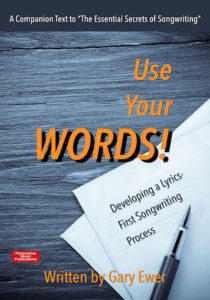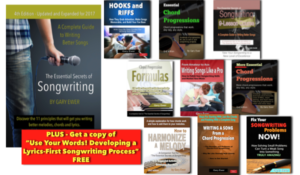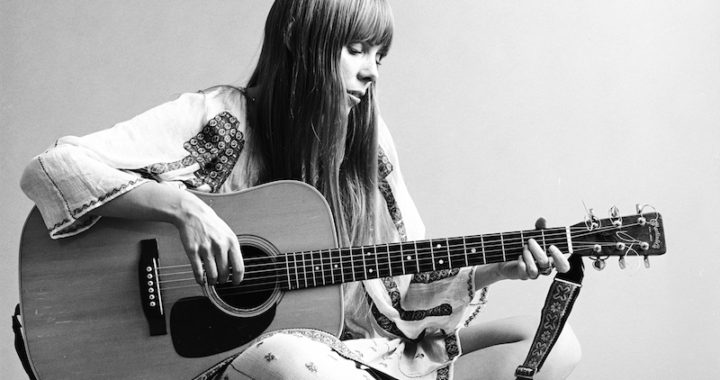All the basic components of a song — especially the chords, melodies, lyrics — act as partners. Nothing happens in isolation. A good melody will sound even better if the chords support it. Lyrics sound better if the melody they’re delivered with matches the rhythm and basic contour of the words.
 Trying to get a handle on writing song lyrics? Discover the benefits of making a lyrics-first method your new go-to process with”Use Your Words! Developing a Lyrics-First Songwriting Process. It’s FREE right now when you purchase the 10-eBook Bundle.
Trying to get a handle on writing song lyrics? Discover the benefits of making a lyrics-first method your new go-to process with”Use Your Words! Developing a Lyrics-First Songwriting Process. It’s FREE right now when you purchase the 10-eBook Bundle.
If you put your focus on just one of those basic components — the melody, for example — there are other ways to create good partnerships. For example, you will want your verse melody to be constructed in such a way that it acts as a good partner for your chorus melody. Or you might work to create a kind of musical connection between the chords you choose for the verse and the chords you choose for the chorus.
With lyrics, you can and should do the same thing: create a verse lyric that pairs up nicely with the lyric you use in the chorus. What are the kinds of things you should be watching for when you think of verse and chorus pairs?
- Describe (verse), then emote (chorus). The best songs are the ones that create emotions within the listener. So your verse should be creating scenes or describing events and people that have the potential for creating an emotional response.
- Consider writing the chorus lyric before the verse lyric. This isn’t always necessary, but might be worth a try if you find that your verse and chorus lyrics are a bit too disconnected. Once you know what your song is about, write some or all of the chorus lyric. Once you’ve got aspects of the chorus working, it can allow you to write things in your verse that more specifically target the emotions of the chorus.
- Allow Verse 2 to be a bit more emotional than Verse 1. Since the listener has already experienced the emotional release that occurs by listening to the chorus, it’s hard to go back to a far less emotional verse. So Verse 2, while still mainly needing to be descriptive of people or events, might allow for more feeling and emotion. (You can’t put the genie back in the bottle, so to speak.)
In point #3 above, take a look at a typical pop song, and compare verses 1 and 2 without looking at the chorus in between. In most cases, you should see this subtle rising of emotion happening.
And in most cases, the change is indeed subtle. A good classic example would be Joni Mitchell’s “Both Sides Now.” The verse describes events and situations from an observer’s point of view; you rarely see the word “you” or “I”, or any other words to make it personal:
Rows and floes of angel hair
And ice cream castles in the air
And feather canyons everywhere […]
But now they only block the sun
They rain and snow on everyone…
If you take a look at verse 2, you now start to see personal pronouns — a very subtle way to start making the experiences personal. That’s all it takes to heighten the emotional content:
Moons and Junes and Ferris wheels
The dizzy dancing way you feel
As every fairy tale comes real […]
But now it’s just another show
You leave ’em laughing when you go
And if you care, don’t let them know
Don’t give yourself away…
Most good songs I know are a study in subtleties. Subtleties make it that you may not notice things the first time through; it may take several listens before you can answer the question, “Why do I like this so much?”
You also notice, with “Both Sides Now”, the subtlety of changing the key word “clouds” in verse 1, to “love” in verse 2, to “life” in verse 3. That’s a change, however subtle, that most listeners will notice. They won’t know necessarily why that progression of words works. They won’t necessarily conclude that love is bigger than the clouds, and that life is bigger than everything. But they’ll still feel the effect.
The subtlety of good lyrics is something that needs to be practiced and honed. And part of the process of improvement is listening to and studying good lyrics. With every lyric you write, go back over what you’ve created and look for ways to polish what you’ve written, always with subtlety in mind.
 Written by Gary Ewer. Follow Gary on Twitter.
Written by Gary Ewer. Follow Gary on Twitter.
 If you’re ready to take your songwriting to its highest level possible, you need “The Essential Secrets of Songwriting 10-eBook Bundle.” Get the manuals that thousands of songwriters are using.
If you’re ready to take your songwriting to its highest level possible, you need “The Essential Secrets of Songwriting 10-eBook Bundle.” Get the manuals that thousands of songwriters are using.










